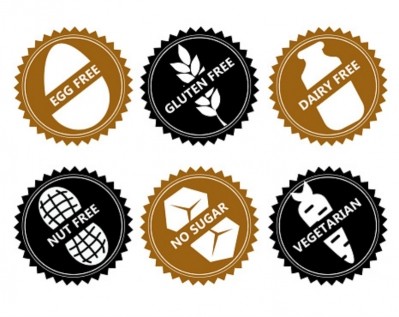Food allergies in children: More credible labelling policies as well as avoiding cross contamination crucial – HealthNuts study lead

The HealthNuts study has been ongoing for some 15 years, comprising data from children across Australia, Singapore, South Africa, 10 countries in Europe, the United Kingdom and the United States.
According to HealthNuts project lead and Co-Group Leader of the Population Allergy group Dr Jennifer Koplin, there needs to be an effective strategy to protect children both pre and post allergy.
For the latter, she pointed out that allergen labelling could be confusing for parents.
“When a child has already developed a food allergy, better allergy label usage, and parents reading these labels properly, is really important to protect them.
“Precautionary label usage in Australia is voluntary, which presents two issues: One is of course the uncertainty this presents, as it is hard to tell whether a food product does not carry a label because there is truly no risk of allergen cross-contamination in the food, or because the manufacturer simply decided not to use it. [Here], parents will need to read ingredients carefully to prevent allergic reactions.
“The other is ironically the problem of over-usage, where some manufacturers are using these extremely commonly and end up restricting these kids’ diets as they can’t eat anything carrying the label, which is another issue. Instead of using these on everything, instead every effort should be made to prevent cross-contamination, so that the label can be used less for the right reasons.”
That said, Dr Koplin added that the call here is not for the label to be made mandatory as this would be a ‘difficult and challenging’ process, but instead for industry to improve practices and reduce cross-contamination.
“For example, there’s an Allergen Bureau in Australia representing industry allergen management, and the group is trying to put manufacturing practices into place for the food industry so as to prevent cross-contamination,” she said.
The project has found food allergies in children to be very common in Australia compared with many other countries, particularly in young infants below one year of age – some 10% of all young infants in Australia have a food allergy.
“We know that egg allergies are the most common type of food allergy in infants below 12 months of age, but by age 4 to 6, usually peanut and other tree nut allergies overtake these,” Dr Koplin told FoodNavigator-Asia.
“So many infants tend to grow out of the egg allergy, but we have found that few, maybe 20% or so, grow out of the peanut allergy, and it is likely this may follow them into adulthood. [We also recently discovered] that the introduction of peanut into a child’s diet early on, before they turn 12 months old, has led to a 16% decrease in peanut allergy.
“This shows the importance of introducing [the allergen] before the child develops the allergy, to prevent it from even developing. However, much more research and data is needed for other types of allergens,” said Dr Koplin.
Australian-born Asian children at high risk
The HealthNuts project has also found that children born in Australia to Asian parents, especially East Asian parents, are particularly susceptible to developing food allergies.
“The parents themselves have very low rates of allergy and disease, but children born to East Asian parents who were born in East Asia and then migrated to Australia were exceptionally high, some three times higher than other children,” said Dr Koplin.
“This phenomenon was not observed in other migrant children such as from the United Kingdom or Europe, and if the children were born in Asia but migrated over later in life, these high rates were not seen either.
“This has led us to believe that there is actually often a mismatch between the related genes and the Australian environment, such that when the child is born in Asia they have a certain protective factor preventing the development of food allergies, which is not present in Australia, leading to exceptionally high rates when they are born here.”
The project is now trialling whether vitamin D supplementation in the first year of life is able to help prevent food allergies.
Moving forward, Dr Koplin said that the team will also be following up on the progress of the study’s original child recruits, the oldest of which are turning 15 and the youngest turning 10 this year.
“We have collected data from the 10-year-old subjects and will be analysing this over the next year, whereas funding is being sought to follow up on the 15-year-olds,” she said.
“The 15-year-old results will be interesting, as I really want to see the impact of adolescence on food allergies, what the reactions are like, whether there is increased risk of severe reactions and so on.”






















